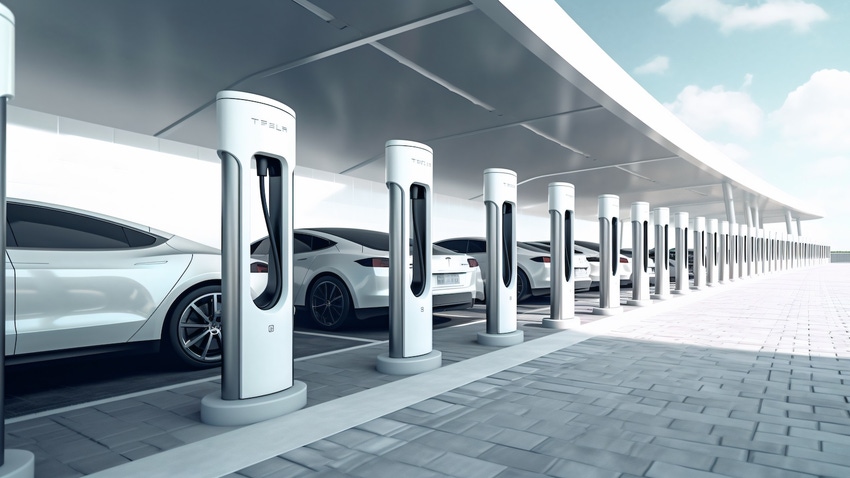High-voltage EVs Take Charge — and Fast — at Chinaplas
The efficiency of an electric motor increases with a high-voltage system, improving driving range and reducing the cost of the battery.
February 19, 2024

At a Glance
- 800-V charging systems require high-temperature-resistant and flame-retardant materials to ensure safety
- Ultra-fast-charging vehicles are capable of completing a charge in five to 10 minutes
Automakers are raising the bar for voltage systems in new energy vehicles (NEVs) from 400 to 800 V. According to Joule's Law, the efficiency of an electric motor increases with a high-voltage system, thus improving driving range and reducing the cost of the battery.
Under a high voltage, the motor and battery operate at a significantly higher temperature that requires better thermal management. This means plastics need to possess high temperature resistance and flame retardance.
Leading resin producers, such as Syensqo (formerly Solvay) and Celanese (the current owner of the former DuPont engineering plastics business), have launched high-temperature polyamide (PA) resins and films, as well as PPS and PEEK resins, that are suitable for high-temperature electric drive systems to help motors operate efficiently.
A battery module of Audi’s e-tron is processed into an independent injection molded part using EMS-Grivory's PA 66, which is a flame-retardant V0 grade. Suppliers such as Sabic and Envalior have also launched suitable flame-retardant plastic compounds to ensure the safe operation of the motor and battery module. Among them, Sabic’s latest extrusion-grade flame-retardant grade is also suitable for battery pack manufacturing while Envalior's thermoplastic materials meet the requirements of battery module immersed insulating coolant.
High thermal conductivity materials for efficient heat dissipation
Ultra-fast charging vehicle models are capable of completing a charge in five to 10 minutes. According to Huawei MI data, vehicle models based on the high-voltage fast-charging platform are expected to gain a market share of 50% of the overall NEV market by 2026, accounting for 5.8 million units in the China market.
With suppliers such as CATL, Sunwoda, Gotion High-tech, and Greater Bay Technology launching ultra-fast charging batteries, more and more ultra-fast charging guns are using liquid-cooled fast-charging solutions to handle the high-voltage, high-current, high-power transmission. This requires the charging gun and cable materials to have high thermal conductivity, strength, and toughness.
Meeting these high requirements, Dow's HTE5015-90U thermally conductive silicone rubber and potting/sealing materials can quickly dissipate heat from the charging gun tip. Further, BASF's Elastollan thermoplastic polyurethane (TPU) 1180A10WDM makes charging cables for fast-charging stations more flexible and easier to use.
Aesthetics now a factor in charging ports
With the rapid development of smart cars, the charging port of the car is also becoming more aesthetic, “smarter,” and user-friendly. For example, the charging port cover of Audi's all-electric e-tron series is made of Akro-Plastic’s fiber-reinforced Akroloy PA GF 60 black (6418) polyamide, while WM Motor uses a PPE/PA alloy compound to manufacture the charging port cover, which is lightweight and safe. Further, Röchling has introduced an automatic charging port cover made of biopolymer.
This article is an edited and abridged version of source material provided by Adsale Plastics Network.
About the Author(s)
You May Also Like




